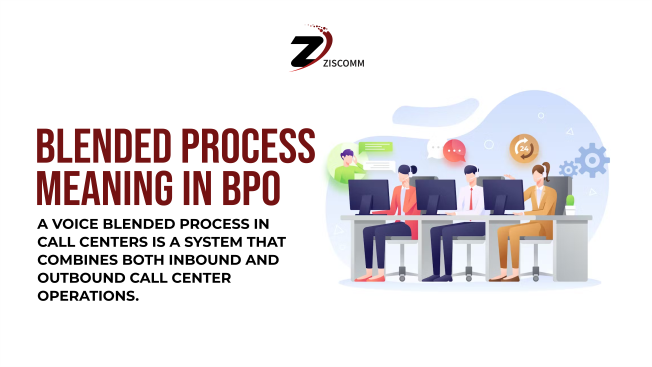
What is a Blended Call Center?
In the ever-evolving world of customer service, businesses constantly seek innovative ways to improve efficiency and customer satisfaction. One such innovation is the blended call center. But what exactly is a blended call center, and how does a blended call center operate? This complete guide will delve into the concept, benefits, challenges, and best practices for setting up a blended call center.
Introduction
Blended call centers are transforming how businesses handle customer relations by combining both inbound and outbound services. This universal approach provides a smooth customer experience while optimizing agent productivity. In this article, we will explore everything you need to know about blended call centers and how blended call centers can benefit your business.
Blended Process Meaning in BPO
In the context of Business Process Outsourcing (BPO), a blended process refers to the integration of both inbound and outbound communication tasks handled by the same set of agents. Receiving and making calls means that agents are equipped to manage incoming customer inquiries, support calls, and emails (inbound), as well as proactively reach out to customers for purposes such as sales, follow-ups, and surveys (outbound).
The two-way communication channels approach aims to maximize efficiency and productivity by ensuring that agents can smoothly switch between different types of tasks based on real-time demand and call volume, thereby optimizing resource utilization and improving overall customer service.
Recommended: What is Call Center? Definition, Types of Call Center
What is Call Blending?
Call blending is a practice within call centers where agents handle both inbound and outbound calls using the same set of resources. Managing calls in both directions allows agents to smoothly switch between answering incoming customer inquiries and making outgoing calls for tasks such as sales, follow-ups, and surveys. Call blending aims to optimize efficiency and productivity by dynamically balancing call traffic based on real-time demand.
Why Opting for a Blended Contact Center Is a Smart Move?
Opting for a blended contact center—integrating both in-house and outsourced operations—is a smart move for several key reasons:

1. Cost Efficiency
A blended contact center allows companies to manage costs more effectively. Outsourcing part of the operations can reduce expenses related to hiring, training, and maintaining a large in-house team. The cost-saving approach provides flexibility to scale operations up or down based on demand without incurring significant costs.
2. 24/7 Availability
By combining in-house and outsourced teams, businesses can ensure round-the-clock support for their customers. 24/7 availability is especially important for global companies with customers in different time zones. An outsourced team can handle after-hours support, while the in-house team manages peak hours and complex queries.
3. Expertise and Skill Diversity
Blended contact centers benefit from a diverse skill set. Outsourcing partners often bring specialized knowledge and experience, particularly in handling specific tasks or technologies. Meanwhile, the in-house team can focus on maintaining the company’s core values and ensuring high-quality customer relations.
4. Flexibility and Scalability
A blended model provides the flexibility to adapt to changing business needs. During peak seasons or unexpected surges in demand, the outsourced team can help manage the increased workload. Flexibility and scalability ensure consistent service levels and are manageable for the in-house staff.
5. Improved Customer Experience
With a blended contact center, companies can use the strengths of both in-house and outsourced teams to deliver a superior customer experience. The in-house team can handle more complex, high-touch interactions, while the outsourced team manages routine inquiries efficiently. This division of labor helps ensure that all customer needs are met promptly and effectively.
6. Risk Mitigation
Depending only on an in-house or outsourced model can expose businesses to various risks. A blended approach mitigates these risks by diversifying the operational base. In the event of disruptions (e.g., natural disasters or technical failures), having a blended model ensures that customer support can continue unbroken.
7. Access to Advanced Technologies
Outsourcing partners often invest in the latest technologies and tools for customer support. By combining these resources into a blended contact center, companies can benefit from advanced solutions without significant capital investment. Integration of high-tech solutions and access to cutting-edge technology can improve service efficiency and effectiveness.
Recommended: 11 Advantages of Call Centers
The Key Difference Between Call Blending and the Blended Process in BPO
1. Call Blending
Call Blending refers to the practice within call centers where agents manage both inbound and outbound calls. The focus is on optimizing call center efficiency by allowing agents to smoothly switch between answering incoming calls from customers and making outgoing calls for sales, follow-ups, or surveys. The primary objective is to balance call traffic and improve agent productivity within a call center environment.
2. Blended Process in BPO
Blended Process in BPO contains a broader combination of various customer service and support tasks within a Business Process Outsourcing framework. Customer service and support task combination includes handling multiple communication channels such as phone calls, emails, chats, and social media interactions. The blended process aims to provide a complete approach to managing all customer interaction and support functions efficiently, not just limited to phone calls but across various platforms.
How Does a Blended Contact Center Operate?
A blended contact center operates by smoothly combining both inbound and outbound communication tasks, allowing agents to handle all types of customer interactions efficiently. Here’s a user-friendly breakdown of how a blended contact center works:
1. Receiving Inbound Calls
- Customer Inquiries: When customers call for support, questions, or assistance, the Automatic Call Distribution (ACD) system routes the call to the most suitable agent based on the caller’s needs and the agent’s expertise.
- Support and Troubleshooting: Agents help resolve issues, provide information, or assist with orders and other requests.
- Interactive Voice Response (IVR): Callers can navigate a menu of options, getting routed to the right department or agent, or even finding answers through self-service options.
2. Making Outbound Calls
- Sales and Promotions: Agents proactively call potential or existing customers to inform them about new products, promotions, or services.
- Follow-Ups and Surveys: Agents reach out to customers for follow-up calls to ensure satisfaction or to conduct surveys for feedback.
- Predictive Dialing: The system uses algorithms to automatically dial numbers and connects agents to live respondents, reducing wait times and increasing efficiency.
3. Balancing the Workload
- Dynamic Call Handling: The system intelligently balances the workload by adjusting the ratio of inbound to outbound calls based on real-time demand. If inbound call volume decreases, agents can be switched to outbound tasks and vice versa.
- Skill-Based Routing: Calls are directed to agents with the appropriate skills and experience to handle specific types of inquiries, ensuring customers get the best possible service.
4. Utilizing Technology for Efficiency
- CRM Integration: Agents have instant access to customer history and information, allowing for personalized and efficient service.
- Call Monitoring and Recording: Supervisors can monitor calls in real-time for quality assurance and provide feedback to agents to improve performance.
5. Real-Time Analytics and Reporting
- Performance Tracking: The system provides real-time data on key metrics such as call volume, average handling time, and customer satisfaction. This helps in identifying areas for improvement and making informed decisions.
Why Blended contact centers Beneficial
Blended contact centers improve overall efficiency by ensuring that agents are always engaged, reducing idle time, and enhancing the customer experience by providing quick, personalized service. This model not only optimizes resource utilization but also boosts agent morale by offering a varied workload.
Recommended: What Does Inbound and Outbound Call Center Mean?
Key Features of a Blended Call Center
To function effectively, blended call centers rely on several key features and technologies:
1. Automatic Call Distribution (ACD)
ACD systems route incoming calls to the most appropriate agent based on predefined criteria such as caller intent, agent skills, and availability. ACD systems route ensures that customers are connected to the right person quickly.
2. Interactive Voice Response (IVR)
IVR systems act as virtual receptionists, offering self-service options to callers and directing them to the correct department or agent. IVR systems reduce wait times and improve customer satisfaction.
3. Predictive Dialing
Predictive dialers automate outbound calling, connecting agents only when a live person answers. Predictive dialers increase agent productivity by minimizing idle time and ensuring that more calls are made.
4. Call Monitoring and Recording
Call monitoring allows supervisors to listen in on live calls for quality assurance and training purposes. Call recording provides a record of interactions that can be reviewed for compliance and performance improvement.
5. Customer Relationship Management (CRM) Integration
Integrating CRM systems with call center software ensures that agents have real-time access to customer information. Integrating CRM systems allows personalized and efficient service.
6. Real-Time Analytics and Reporting
Analytics and reporting tools track key performance indicators (KPIs) such as call volume, average handling time, and customer satisfaction. Using analytics and reporting tools approach facilitates continuous improvement.
Recommended: 23 Call Center Smart Goals
Steps to Set Up a Blended Call Center
Setting up a blended call center involves several critical steps:
Step 1: Define Goals and Objectives
Start by identifying the goals and objectives the business aims to achieve. These include improving customer service quality, boosting sales, reducing operational costs, and improving agent satisfaction.
Step 2: Choose the Right Software
Select a robust call center software solution that supports both inbound and outbound calling. Key features to look for include ACD, IVR, predictive dialing, and CRM integration.
Step 3: Hire and Train Agents
Recruit agents who are skilled in both inbound and outbound calling. Provide complete training in product knowledge, communication skills, and customer service best practices. Highlight people-centric skills such as compassion and active listening.
Step 4: Establish Call-Routing Workflows
Implement a call-routing system that can handle fluctuations in call volume and direct calls to the best-matched agents. Skill-based routing enhances customer satisfaction and agent productivity.
Step 5: Integrate with CRM
Ensure call center software is integrated with the CRM system to provide agents with real-time customer information. Integration of software and CRM systems allows personalized interactions and improves service quality.
Step 6: Monitor and Analyze Performance
Use quality monitoring tools to track performance at various levels. Real-time monitoring allows supervisors to provide immediate feedback, while data analysis helps identify trends and areas for improvement.
Step 7: Prioritize Security and Compliance
Stick to strict data security and privacy regulations to protect customer information. Ensure call center software complies with relevant industry standards and regulations.
Step 8: Test and Optimize
Before going live, test your blended call center operations in a simulated environment. Conduct usability testing to identify and resolve any issues. Continuously optimize processes based on feedback and performance data.
Advantages of a Blended Call Center
Implementing a blended call center can offer numerous benefits:
1. Cost-Effectiveness
Combining inbound and outbound operations reduces the need for separate infrastructures, leading to significant cost savings.
2. Improved Efficiency
Blended call centers optimize agent productivity by allowing them to switch between inbound and outbound tasks based on call volume. Blended call centers minimize idle time and ensure efficient resource utilization.
3. Enhanced Customer Service
With AI-driven call routing and real-time customer information, agents can address inquiries promptly and resolve issues faster, leading to higher customer satisfaction.
4. Increased Sales Opportunities
Proactive outbound calling enables agents to follow up on leads, conduct sales campaigns, and upsell products or services, boosting revenue.
5. Flexible Workforce Management
Supervisors can allocate agents to inbound or outbound tasks based on demand, agent skills, and other factors, making workforce management more dynamic and efficient.
Disadvantages of a Blended Call Center
While blended call centers offer many advantages, they also come with challenges:
1. Training Challenges
Agents need to be proficient in handling both inbound and outbound calls, which requires extensive and ongoing training.
2. Complex Scheduling
Balancing inbound and outbound calls can be challenging, especially during fluctuating call volumes. Effective scheduling is crucial to maintaining service levels.
3. Agent Fatigue
Switching between different types of calls can be mentally taxing for agents. Providing good breaks and support is essential to prevent burnout.
4. Inconsistent Call Volumes
Call volumes for inbound and outbound calls may sometimes match differently. During low inbound call periods, agents may need to focus more on outbound tasks or other non-call-related activities.
5. Potential Disruption
Transitioning to a blended call center can cause temporary disruptions. Proper planning and communication are essential to minimize negative impacts.
Best Practices for Managing a Blended Call Center
To maximize the benefits of a blended call center, consider the following best practices:
1. Real-Time Performance Monitoring
Implement real-time call monitoring and provide regular feedback to agents. Use agent scorecards and other tools to track performance and identify areas for improvement.
2. Performance Incentives
Motivate agents with performance-based incentives. Recognizing and rewarding exceptional performance boosts morale and encourages agents to excel.
3. Continuous Training and Development
Invest in ongoing training and development programs to keep agents’ skills sharp. Focus on both technical skills and soft skills like empathy and active listening.
4. Customer Feedback Mechanisms
Implement robust customer feedback systems to gauge support quality. Use insights from customer feedback to fine-tune operations and improve service.
5. Flexible Work Arrangements
Offer flexible work arrangements to help agents manage stress and maintain a healthy work-life balance. Techniques such as box breathing and yoga can be beneficial.
Blended Call Center Process: Final Thoughts
Blended call centers represent a significant improvement in customer service operations. By combining inbound and outbound services, businesses can improve efficiency, improve customer satisfaction, and drive revenue growth. While there are challenges to overcome, following best practices and using the right technologies can help create a successful blended call center. Embracing this model can provide a competitive edge and support long-term business success.
